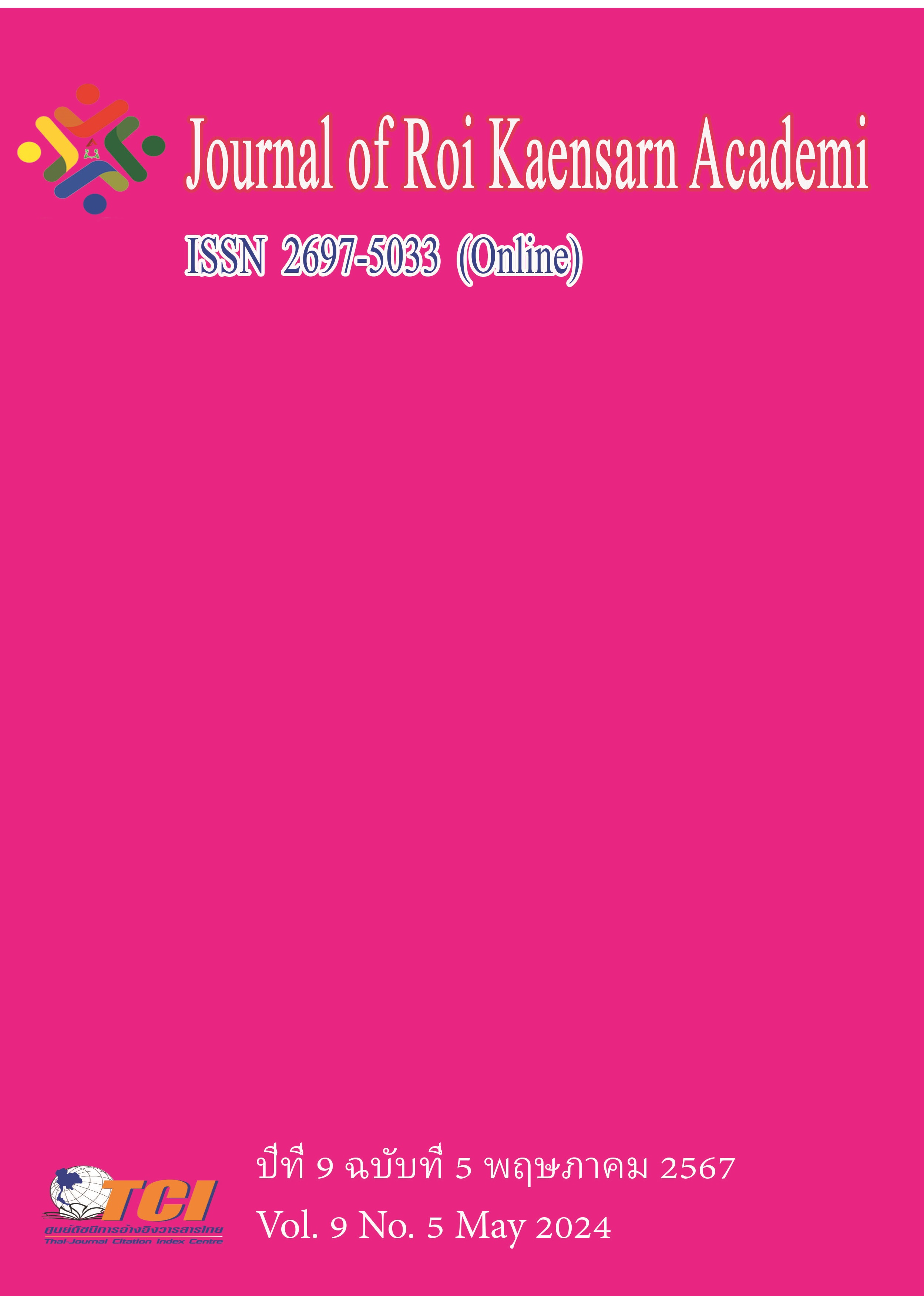The Trombone Basic Skills For First Year Students at Sias University, HENNAN
Main Article Content
บทคัดย่อ
The objective of this research was to study the trombone basic skills for first year students at Sias University of Zhengzhou. This study uses qualitative research methods to gather data from influential informants in Zhengzhou, China, to construct and verify basic trombone skills. The sample group includes 21 well-known trombone and brass teachers with over 20 years of experience, strong teaching and research abilities, and published papers. The research tools include structured semi-structured interviews, theme grouping, direct interpretation, and data presentation. The study will be conducted between 2023 and 2024, focusing on pedagogical approaches, performance posture, breathing techniques, lip vibration techniques, tonguing techniques, and bow-drawing techniques.
The research results were found as follows; 1) Knowledge about trombone: history and characteristics of trombone, a versatile brass instrument with a rich, full sound quality suitable for short melodies. China teaches the trombone, which has a range of two and a half to three octaves, using various methods. 2) Trombone techniques include performance posture, breathing technique, lip vibration technique, tonguing technique, and bow-drawing technique. Both left and right hands play critical roles in trombone performances. 3) Aesthetics of performance and evaluation. Chinese aesthetics influence the aesthetics of trombone performance, yet the artistic aspects of trombone performance in China remain largely unexplored. Evaluation of trombone performance in China uses both subjective and objective criteria, and the SmartMusic® assessment feature provides insights into musical elements and performance techniques.
Article Details
เอกสารอ้างอิง
Boutin, H., Fletcher, N., Smith, J., & Wolfe, J. (2015). Relationships between pressure, flow, lip motion, and upstream and downstream impedances for the trombone. The Journal of the Acoustical Society of America. 137 (3), 1195-1209.
Chan, C. H., Ha, A. S., Ng, J. Y., & Lubans, D. R. (2019). Associations between fundamental movement skill competence, physical activity and psycho-social determinants in Hong Kong Chinese children. Journal of Sports Sciences. 37 (2), 229-236. doi: 10.1080/02 640414.2018.1490055
Chen, G. F., & Wu, Y. D. (2019, December). Audio Feature Analysis for Trombone. In 2019 IEEE 2nd International Conference on Electronics and Communication Engineering (ICECE) (pp. 71-74). IEEE.
Gendrich, J. M. (2003). Teaching and learning jazz trombone. Dissertation of Doctor of Philosophy in the Graduate School of The Ohio State University.
Jiang, N. (2015). A study on the playing technique of lip trill in trombone playing. Journal of Northern Music: Academic edition. 20 (4), 53.
Jing, J. (2015). The Differences Between Chinese and Western Music Education. Canadian Social Science. 11 (2), 94-97. Available from: http://www.cscanada.net/index.php/css/ article/view/6142 DOI: http://dx.doi.org/10.3968/6142
Johnson, A. (2010). The fundamental approach to trombone technique: a comprehensive strategy for addressing common technical deficiencies in trombone performance. Dissertation of Doctor of Philosophy at Ball State University.
Kristensen, E. (2014). An acoustical study of trombone performance, with special attention to auditory feedback deprivation (Master's thesis, Institutt for fysikk).
Qiu, X. Y. (2008). The importance of scientific teaching method in trombone teaching. Journal of Social science of Jiamusi University. 26 (4), 120-121.
Reider, S. R. (2012). The Natural Learning Process and Its Implications for Trombone Pedagogy (Doctoral dissertation, University of North Texas).
Rodríguez, J.C.; del Rey, R.; Peydro, M.A.; Alba, J.; Gámez, J.L. (2023). Design, Manufacturing and Acoustic Assessment of Polymer Mouthpieces for Trombones. Polymers. 15 (1667), 1-15. https://doi.org/10.3390/ polym15071667
Sluchin, B., & Lapie, R. (1997). Slide trombone teaching and method books in France (1794-1960). Historic Brass Society Journal. 9, 4-29.
Sobnosky, R. (2016). Challenges in Beginning Trombone Pedagogy. Honors Research Projects. 377. http://ideaexchange.uakron.edu/honors_research_projects/377
Takahashi, Y. (2001). U.S. Patent No. 6,255,571. Washington, DC: U.S. Patent and Trademark Office.
Velut, L., Vergez, C., & Gilbert, J. (2016). Measurements and time-domain simulations of multiphonics in the trombone. The Journal of the Acoustical Society of America. 140 (4), 2876-2887.
Wang, B. (2011). A Brief discussion on the historical origin and musical characteristics of trombone. Journal of Shanxi Higher Education of Culture and Art. 12 (4), 45-55.
Wang, T. (2017). Analysis of Cultural Mentality in Researches on History of Western Music. Cross-Cultural Communication. 13 (5), 42-45. Available from: http//www.cscanada .net/index.php/ccc/article/view/9688 DOI: http://dx.doi.org/10.3968/9688
Yang, H. (2003). My Opinion About Some Issues of The Music Relationship Between China and West. Huangzhong-journal of Wuhan Music Conservatory.
Yi, Z., Danpradit, P., & Kaosawang, A. (2023). Trombone basic skills of students with the new practical hybrid teaching method. Journal of Green Learning. 3 (1), 36-45.
Zhao, M. (2011). The development of trombone teaching in China in the 20th century. Journal of Magnificent Writing. 30, 180-181.

